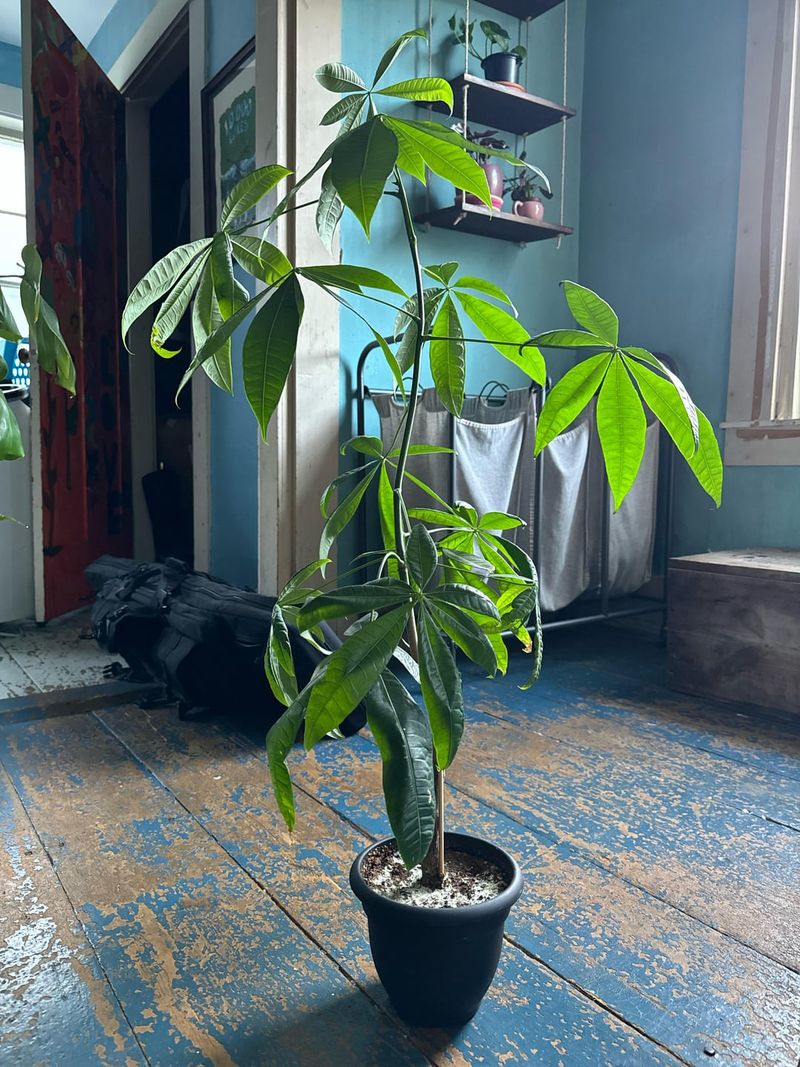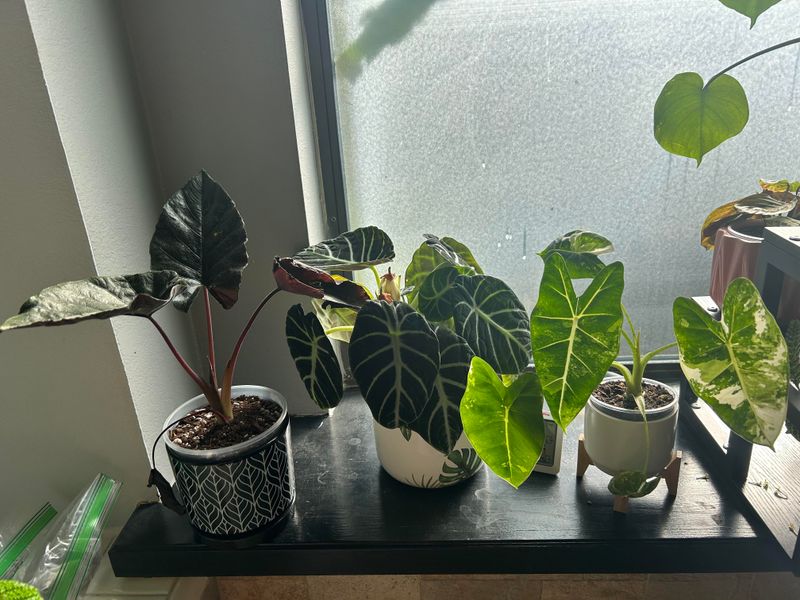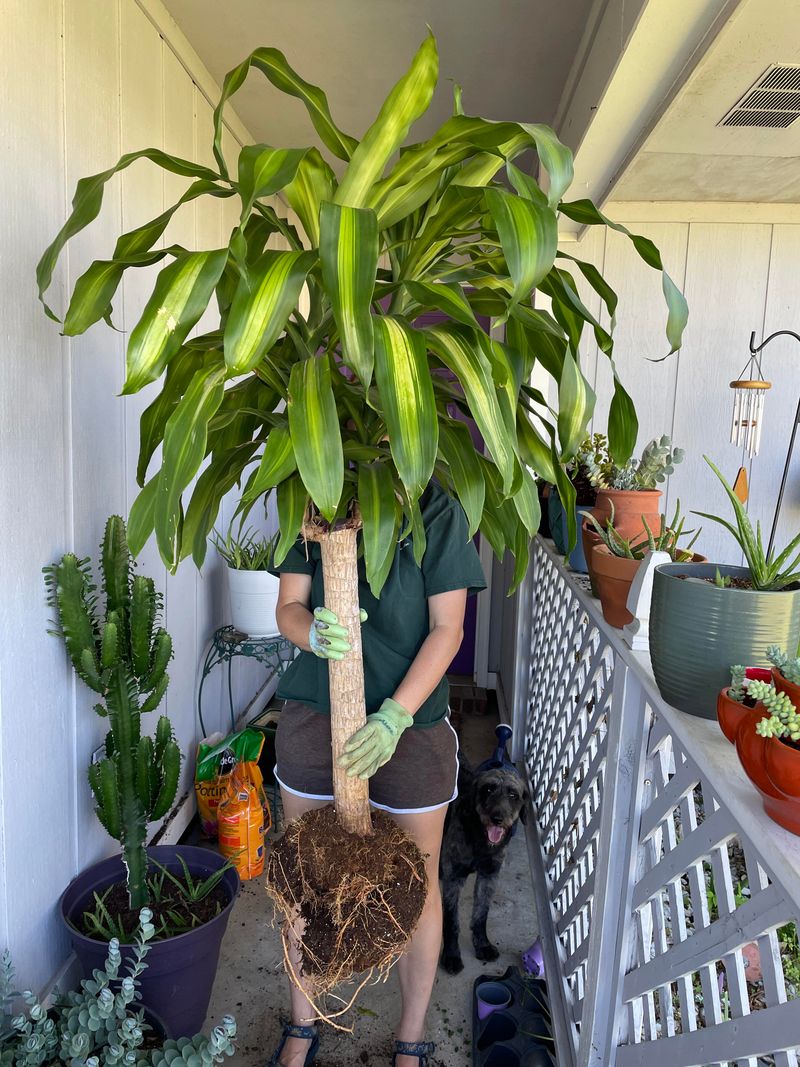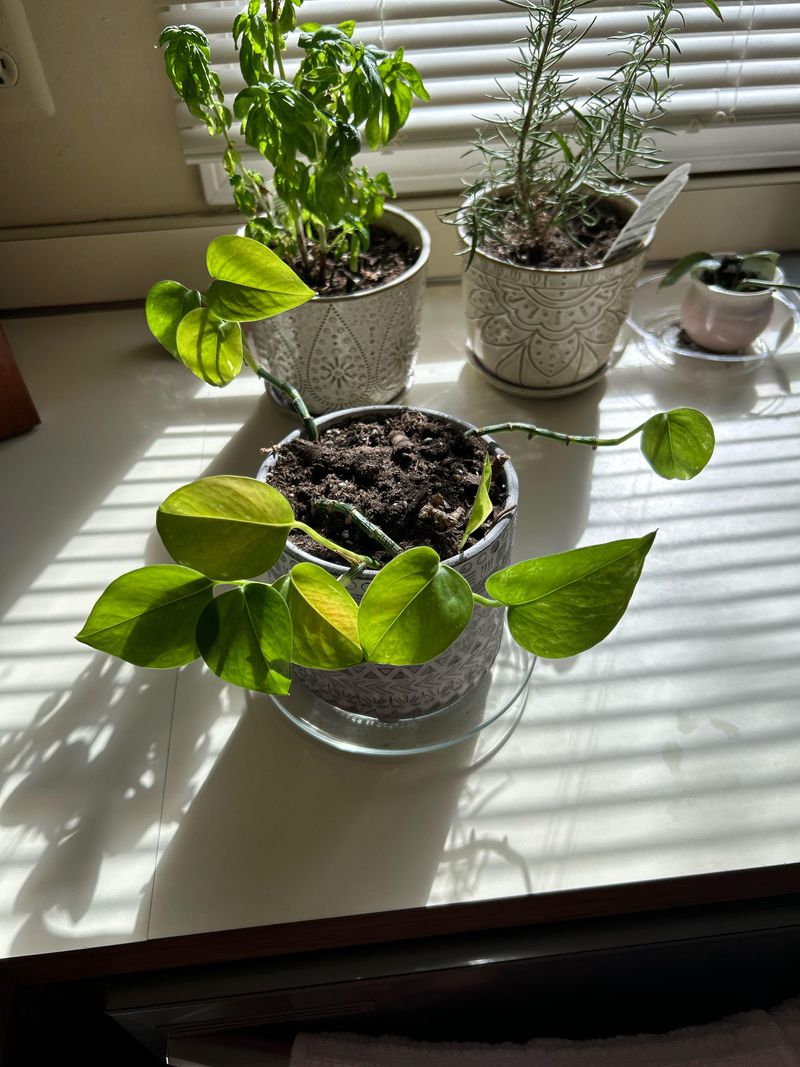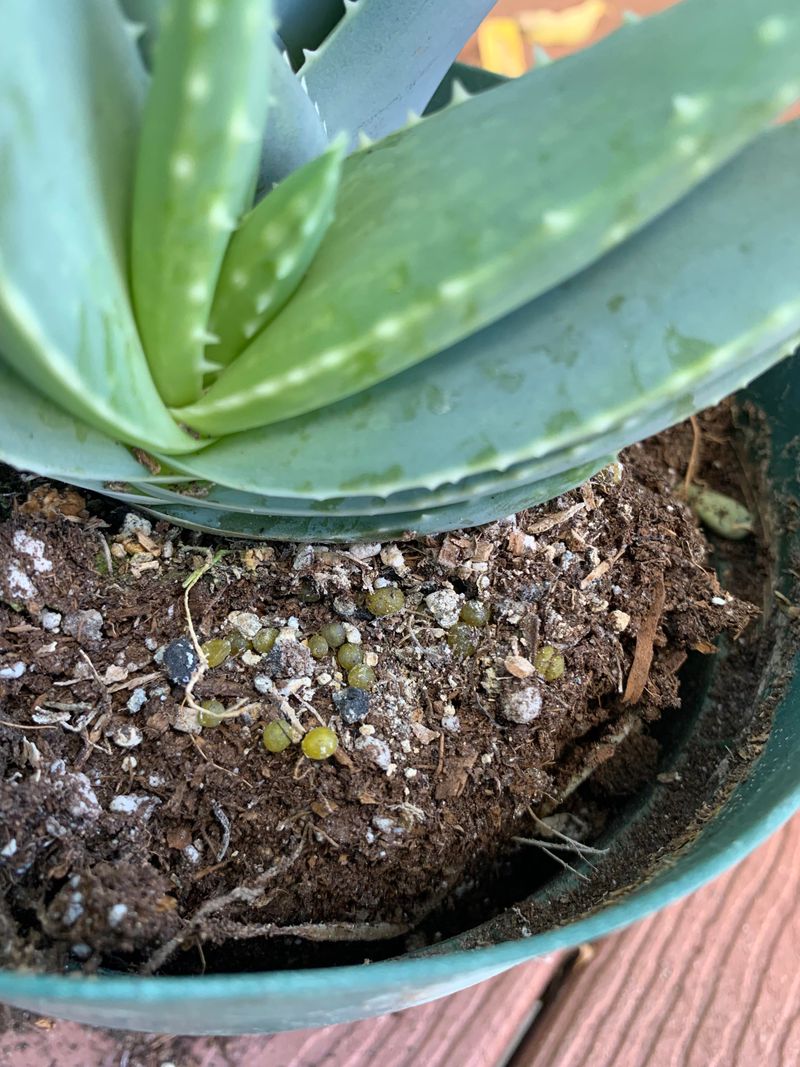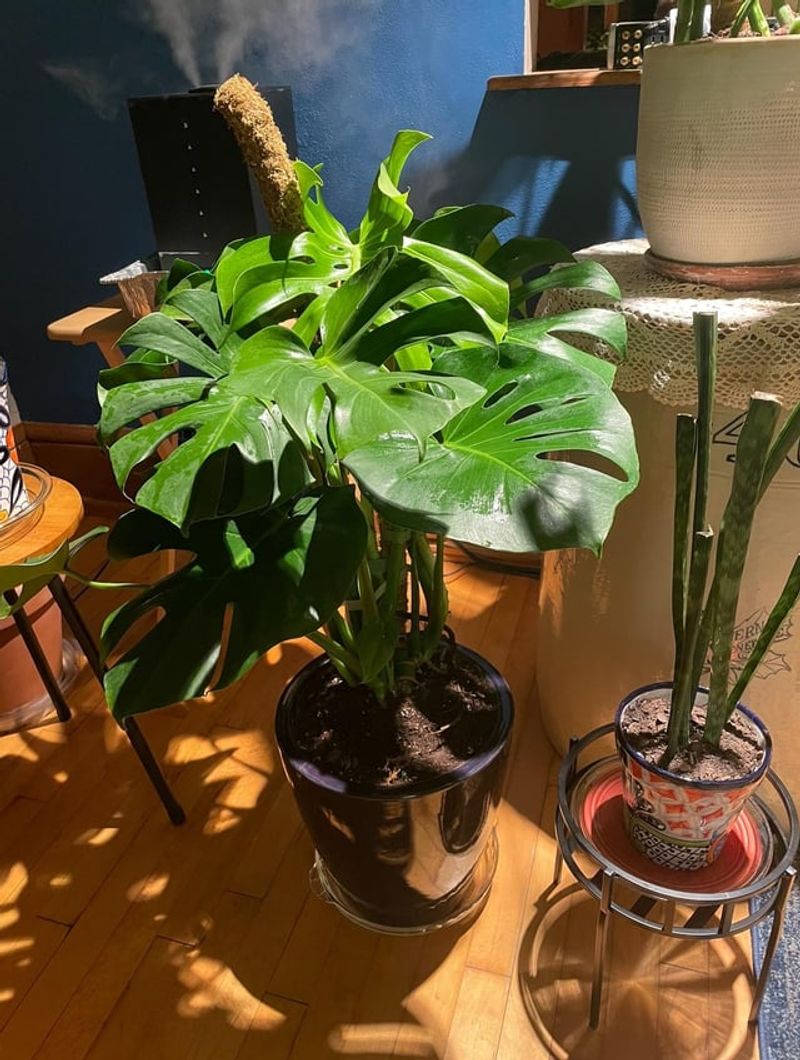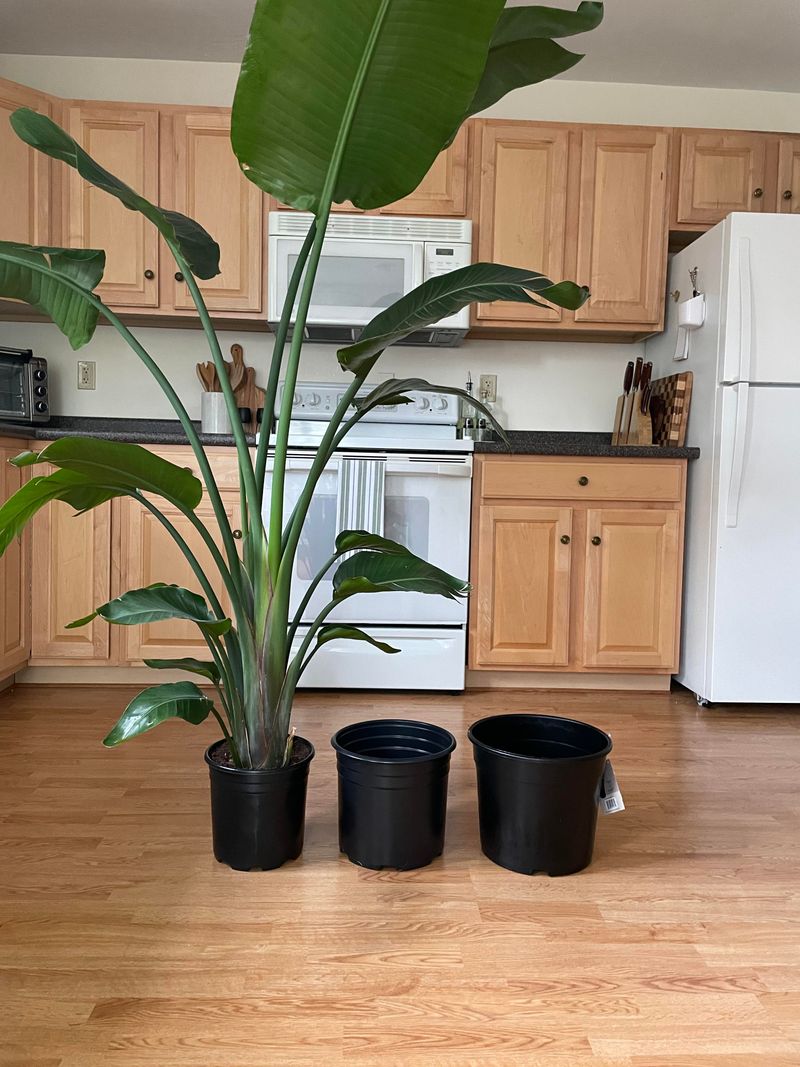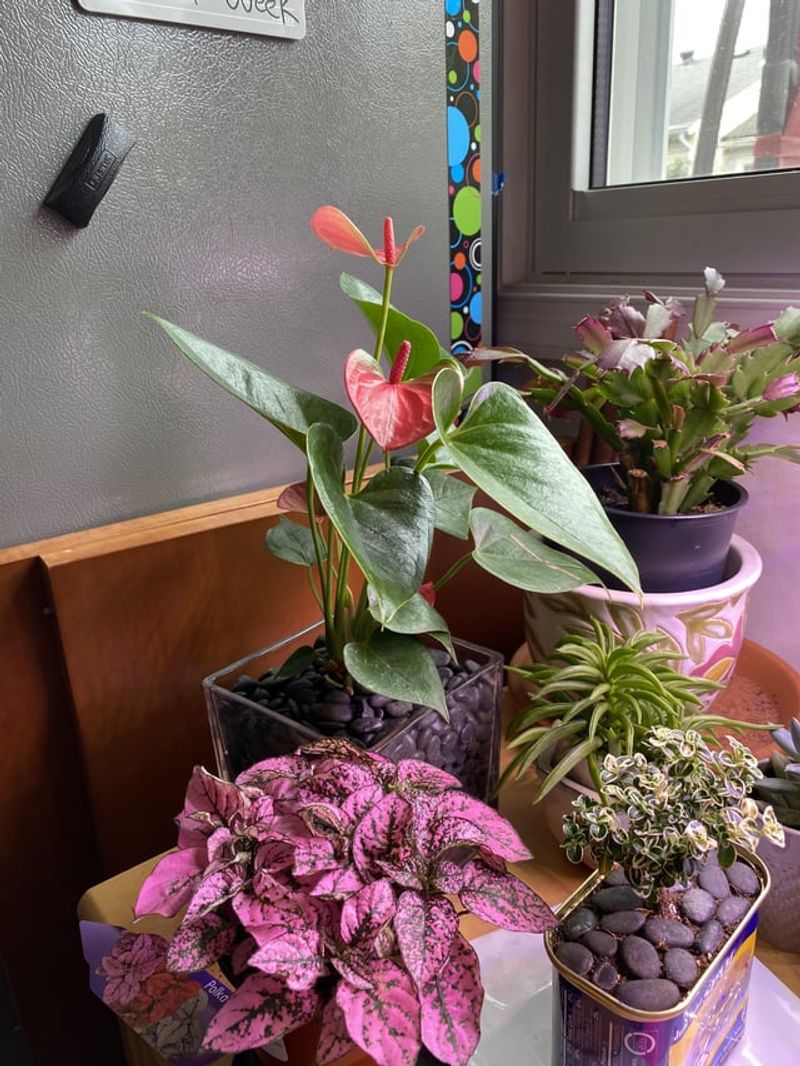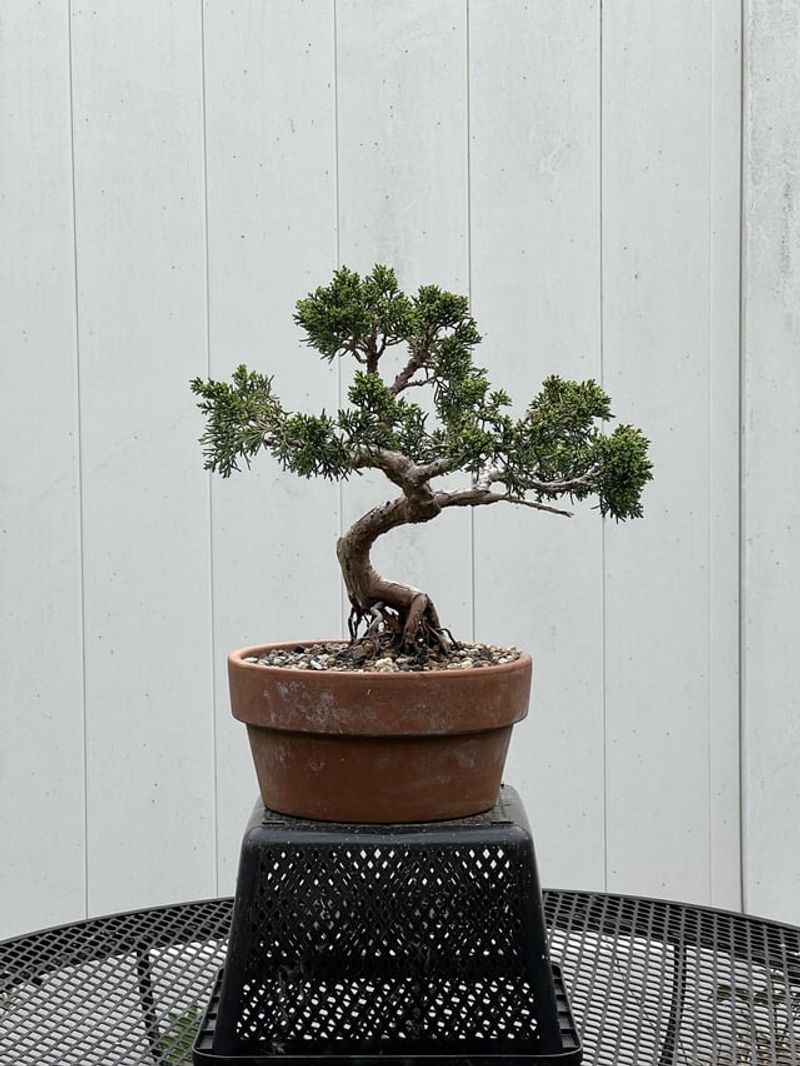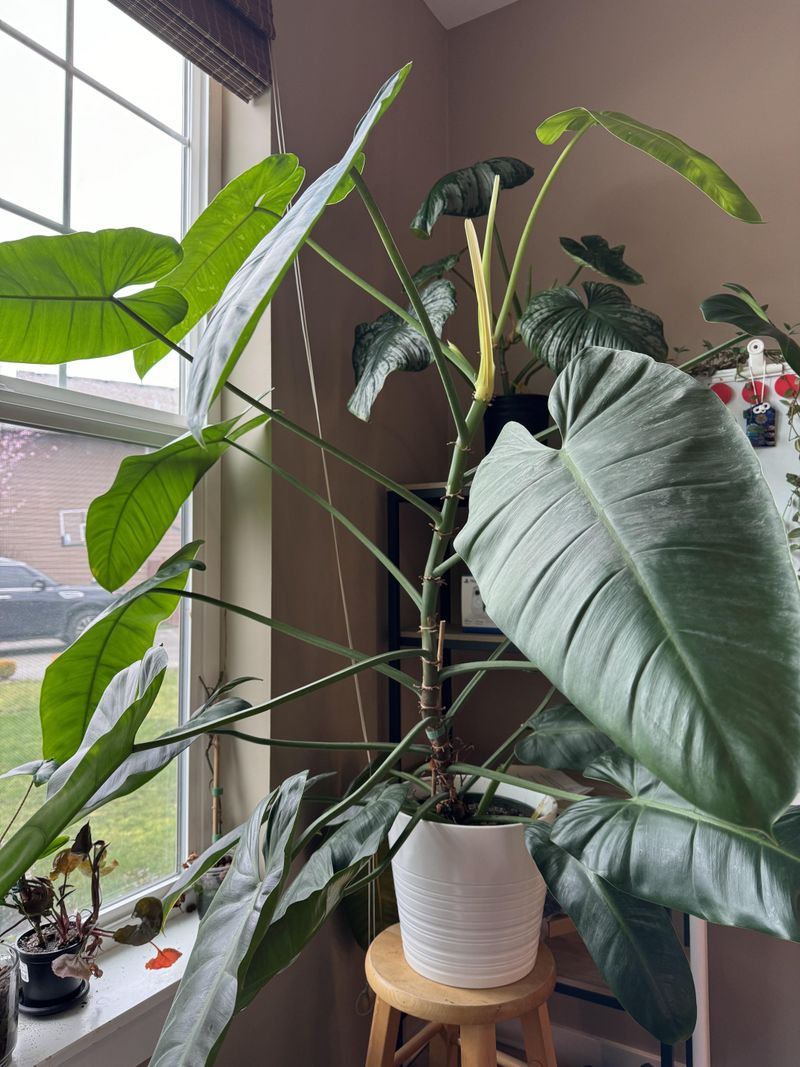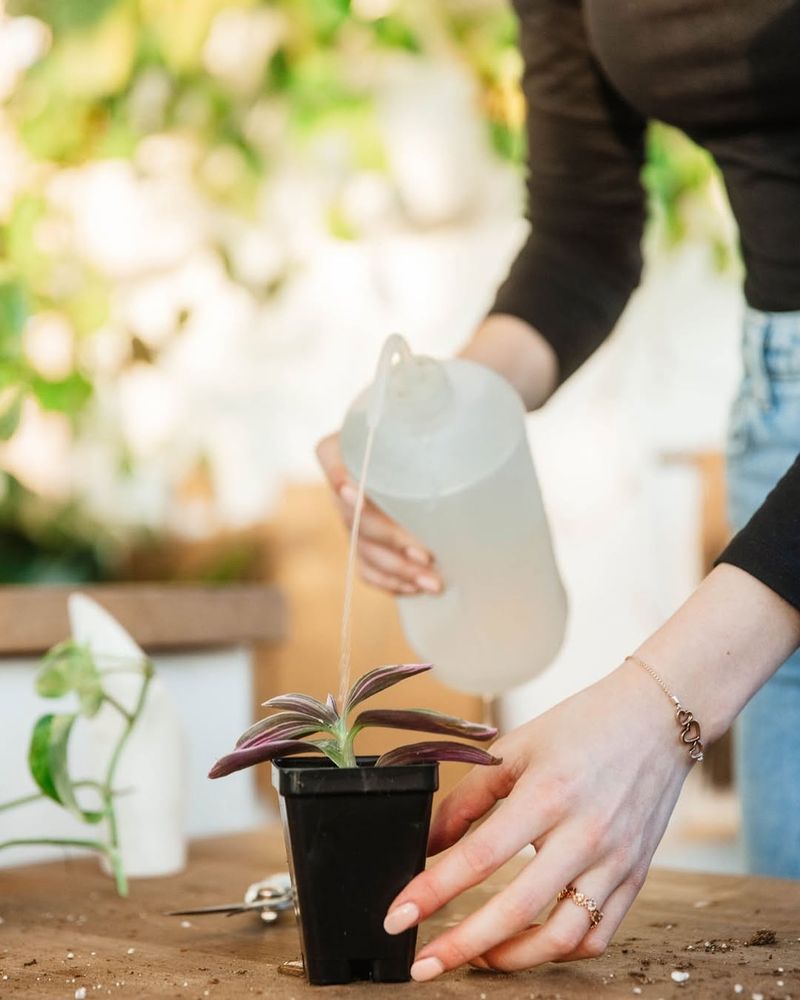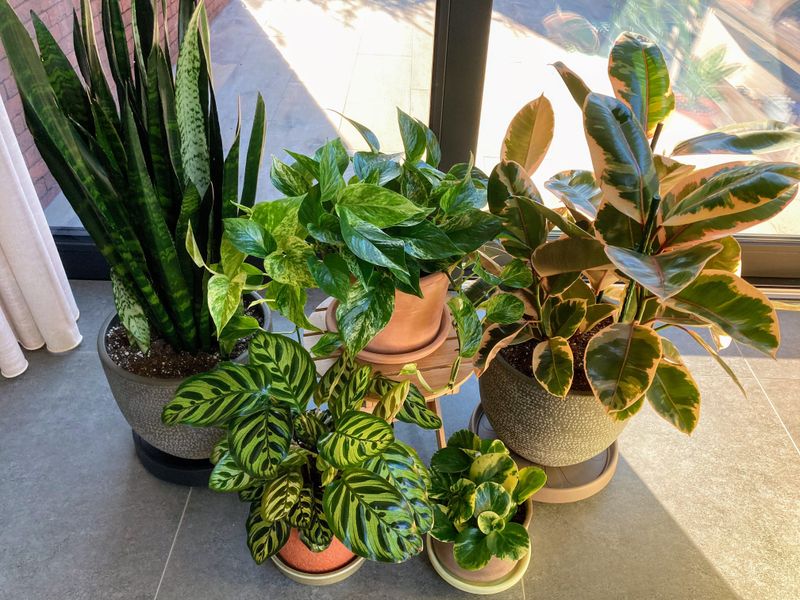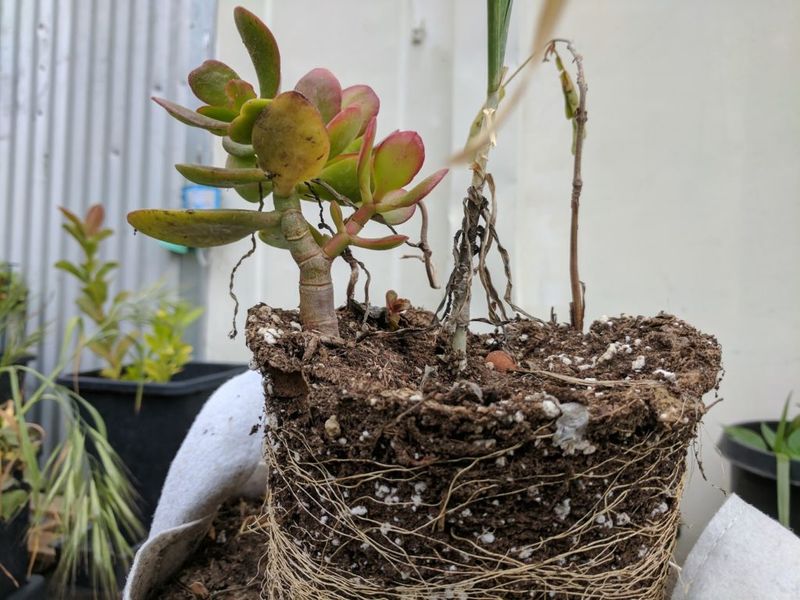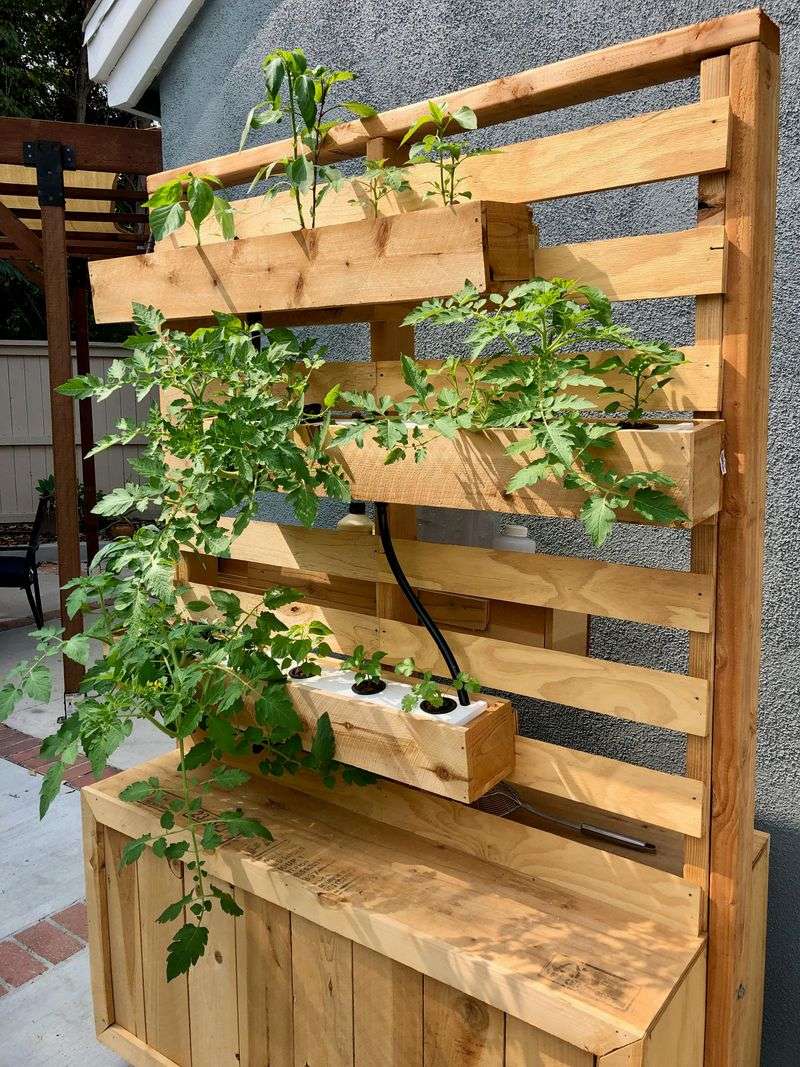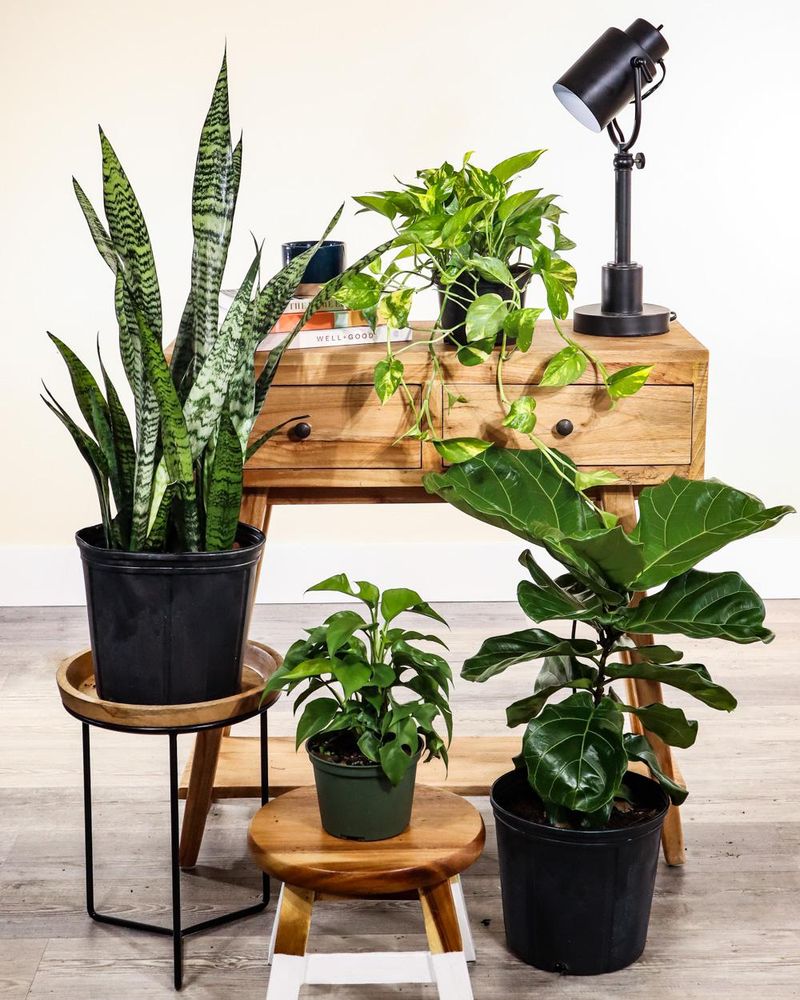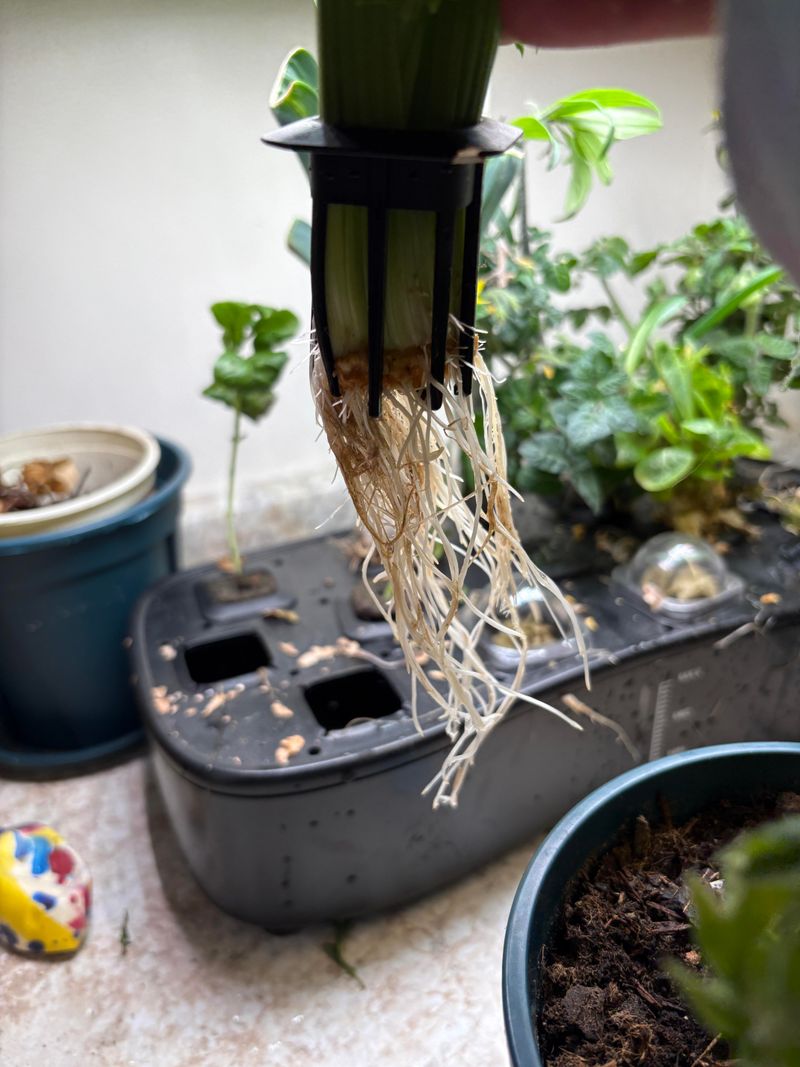Navigating the world of houseplants can be an adventure, especially when it comes to finding that perfect balance between lush growth and spatial constraints. Whether you’re a seasoned green thumb or just starting out, keeping your plants happy without overwhelming their pots is crucial. In this guide, we’ll explore 24 inventive strategies to ensure your houseplants thrive without outgrowing their homes. From pruning techniques to potting tricks, get ready to transform your indoor jungle into a well-balanced ecosystem.
1. Regular Pruning
Trimming leaves and stems is like giving your plant a much-needed haircut. It keeps them looking fresh and prevents them from taking over your living room!
By cutting back old growth, you stimulate new, compact growth while maintaining the plant’s size. Regular pruning not only controls the size but also encourages fuller and healthier foliage.
Plus, it’s a great way to check for any pests or diseases that might be lurking. Remember, a neat plant is a happy plant. Grab your scissors and give your greenery some love!
2. Choose Compact Varieties
Some houseplants are naturally petite, making them ideal for small spaces. Varieties like Jade Plant, Pilea, or Miniature Orchids are perfect picks.
These little wonders are genetically predisposed to stay small, meaning you can enjoy their beauty without constant repotting. By opting for compact varieties, you can have an indoor garden that fits neatly on your shelf or desk.
They’re low-maintenance and add a touch of greenery without overwhelming the space. Perfect for minimalist aesthetics!
3. Repot with Care
Repotting is like moving to a new home; it should be done with care. Use a pot that’s just one size up to avoid overwhelming your plant.
Too much space can lead to overwatering and root rot. Repotting shouldn’t be a frequent affair; once every couple of years is usually enough. During repotting, refresh the soil with nutrient-rich options to give your plant a boost.
Handle the roots gently, ensuring they have enough room to grow without sprawling uncontrollably. Happy roots, happy plant!
4. Use Root Pruning
Root pruning is a secret weapon in plant care. By trimming the roots, you can control the plant’s size effectively.
It’s like a haircut for the roots, keeping the plant from becoming pot-bound. This technique encourages a dense, healthy root system without excessive top growth. During repotting, inspect the roots and trim any that are overly long or damaged.
It’s a delicate process but can significantly enhance your plant’s health and appearance. Root pruning ensures your plant stays content in its current home.
5. Limit Fertilization
Fertilizers are like energy drinks for plants—they boost growth. But too much can lead to overgrowth, filling pots too quickly.
For small pots, limit fertilization to keep growth steady and manageable. Use a balanced fertilizer sparingly, just enough to maintain health without promoting excessive size. Fertilization should be a gentle nudge, not a growth explosion.
By controlling the amount and frequency, you keep your plants healthy and their size in check. Remember, it’s all about balance!
6. Opt for Slow-Release Fertilizers
Slow-release fertilizers are the perfect compromise for feeding without fueling rapid growth. These granules provide a steady nutrient supply, preventing sudden growth spurts that can overwhelm pots.
They dissolve gradually, giving plants what they need over time rather than all at once. Using slow-release options ensures your plants grow at a manageable pace, perfect for maintaining their size.
It’s an easy way to provide consistent nutrition without the worry of outgrowing their pots. Slow and steady wins the race!
7. Adjust Light Exposure
Light is crucial for growth, but too much can push plants to outgrow their pots quickly. Adjusting light exposure helps manage size by controlling the growth rate.
Place plants where they receive adequate but not excessive sunlight. Too much light often accelerates photosynthesis, leading to rapid expansion.
By controlling light, you ensure that growth is gradual and manageable. It’s all about finding that sweet spot where plants thrive without becoming monstrous. Balance light for balanced growth!
8. Select the Right Pot Size
Choosing the right pot size is like picking the perfect outfit; it should fit just right. A pot that’s too big can lead to overwatering and root issues, while too small can restrict growth.
The key is finding that Goldilocks spot—just right for your plant’s needs. A snug fit encourages healthy growth without the risk of outgrowing its home.
The right pot size ensures your plant remains balanced and happy, a win-win for both décor and horticulture!
9. Rotate Plants Regularly
Plants have a tendency to grow towards light, which can cause uneven growth. Regular rotation ensures they grow evenly, preventing one side from becoming too bushy.
This simple trick helps maintain a balanced appearance and keeps plants from outgrowing their pots on one side. By giving each side equal exposure to light, you promote symmetrical growth, enhancing the plant’s overall look.
It’s an easy and effective way to manage size without much effort. Rotate for balance!
10. Choose Shallow Pots
Shallow pots are a clever way to manage plant growth. They limit root expansion, which in turn keeps top growth in check.
By using shallow pots, you encourage plants to develop laterally rather than vertically, perfect for keeping them compact. These pots are ideal for succulents and herbs, adding a touch of greenery to your space without the threat of overgrowth.
Plus, shallow pots can be stylish and fit well with any décor. A win for both form and function!
11. Cut Back Dormant Growth
During winter, many plants enter a dormant stage where growth slows or stops. It’s the perfect time to trim back any excess growth without stressing the plant.
Cutting back during dormancy helps manage size and encourages healthy growth when spring arrives. This seasonal pruning keeps plants from becoming overgrown while they’re resting.
It’s a strategic move that aligns with their natural cycle, ensuring they stay neat and manageable year-round. Snip away for a tidy plant!
12. Keep Humidity in Check
Humidity plays a significant role in plant growth. High humidity can encourage rapid expansion, especially in tropical plants.
By keeping humidity levels in check, you can control growth and keep plants within their pot’s limits. Use a hygrometer to monitor levels and adjust with humidifiers or by misting less frequently. Maintaining the right humidity balance is essential for healthy, controlled growth.
It helps avoid issues related to overcrowding and keeps your indoor garden manageable. Humidity control is key!
13. Subdue Growth with Cooler Temperatures
Temperature affects plant growth significantly. Cooler temperatures can slow down growth, making it easier to manage plant size. By adjusting your indoor climate, you can keep plants from outgrowing their pots too quickly.
It’s a delicate balance; too cold and you risk harming the plant, so aim for a mild, cool environment. This method is especially useful during seasons where growth naturally accelerates.
A touch of coolness can make all the difference in maintaining a tidy indoor garden.
14. Top-Dress with Fresh Soil
Top-dressing involves adding a layer of fresh soil to the existing pot. It’s a great way to refresh nutrients without repotting.
This method enriches the soil, giving plants what they need to thrive without encouraging excessive growth. By adding just a thin layer, you prevent overfilling the pot and maintain a neat appearance. It’s an easy, efficient way to boost plant health while keeping size under control.
Top-dressing offers a nutrient boost without the hassle of repotting.
15. Embrace Bonsai Techniques
Bonsai techniques are perfect for keeping plants small and artistic. These methods focus on shaping and controlling growth through pruning and root trimming.
Applying bonsai principles to your houseplants can transform them into living art pieces, all while managing their size. This approach requires patience and precision, offering a rewarding way to connect with your plants.
It’s ideal for those looking to combine horticulture with creativity, keeping plants both beautiful and contained.
16. Utilize Plant Supports
Plant supports are like a gentle guide for your plant’s growth. They help direct and contain growth, preventing plants from sprawling out of their pots.
Using stakes, ties, or trellises can keep plants upright and well-behaved, perfect for climbers or those with heavy blooms. Supports also add an aesthetic touch, blending function with style.
They’re an easy solution for maintaining order in your plant collection, ensuring your greenery stays neat and contained.
17. Pinch Back New Growth
Pinching back new growth encourages bushier, more compact plants. By removing the tips of new shoots, you prevent plants from becoming leggy and overgrown.
This technique stimulates dense growth, perfect for keeping plants tidy and within pot limits. It’s a simple yet effective way to control size without drastic measures.
Pinching also promotes healthier growth, encouraging more branches and a fuller appearance.
18. Reassess Watering Routine
Overwatering is a common cause of rapid plant growth. By reassessing your watering routine, you can control growth and prevent plants from outgrowing their pots.
Ensure the soil dries out between waterings to maintain a healthy balance. This approach helps avoid root rot and supports gradual, steady growth. Monitoring watering needs based on season and plant type is essential for maintaining size.
A careful watering routine can make all the difference in plant health and size management.
19. Opt for Minimalist Arrangements
Minimalist arrangements focus on simplicity and space efficiency. By choosing fewer plants and smaller pots, you naturally control growth and maintain a tidy appearance.
This approach is perfect for those who love greenery but have limited space. It encourages thoughtful curation, ensuring each plant has room to thrive without overcrowding.
Minimalist design complements modern aesthetics, offering a clean, sophisticated look that never overwhelms. Less is more when it comes to plant arrangement!
20. Explore Air Pruning Pots
Air pruning pots are ingenious designs that limit root growth naturally. These pots have perforated sides, allowing air to reach the roots and prune them as they grow.
This method encourages a dense and fibrous root system without overgrowing the container. It’s a natural way to keep plants small and healthy, perfect for those looking to avoid frequent repotting.
Air pruning pots enhance root health, supporting balanced growth and a compact plant structure.
21. Integrate Vertical Gardening
Vertical gardening is a space-saving solution that keeps plants off the ground and contained. By growing upwards, you manage space efficiently, preventing overcrowding in small pots.
This method is ideal for herbs and small ornamental plants, adding greenery without cluttering surfaces. Vertical gardens are visually striking, turning plant care into wall art.
They offer a unique way to enjoy a lush garden within limited space, supporting controlled growth in a creative format.
22. Give Plants a Haircut
Just like people need haircuts, plants benefit from trims too. Regularly cutting back foliage ensures they don’t become unruly and outgrow their pots.
Removing excess leaves and stems directs energy towards essential growth, maintaining a compact size. This practice keeps plants healthy and thriving without overwhelming their containers. It’s an easy upkeep task that supports plant vitality and aesthetic appeal.
A well-timed trim can transform your indoor garden into a harmonious, well-maintained space.
23. Mix Plant Sizes Judiciously
Combining plants of different sizes creates visual interest and prevents any single plant from dominating the space.
By strategically placing taller plants behind smaller ones, you maintain balance and manage growth effectively. This method ensures that each plant thrives without overshadowing the others, promoting a harmonious arrangement.
Mixing sizes helps distribute light and resources evenly, supporting overall plant health. It’s a design trick that maximizes beauty while keeping growth in check.
24. Experiment with Hydroponics
Hydroponics, growing plants in water, offers precise growth control. This soil-less method ensures plants receive exact nutrients they need, reducing excessive growth.
With hydroponics, you can manage size by adjusting nutrient levels, perfect for maintaining compact plants. It’s a clean, efficient way to garden, ideal for small spaces and urban living. Hydroponic systems can be stylish, turning plant care into a contemporary art form.
Hydroponics offers control and creativity, allowing you to tailor plant growth to your liking.


